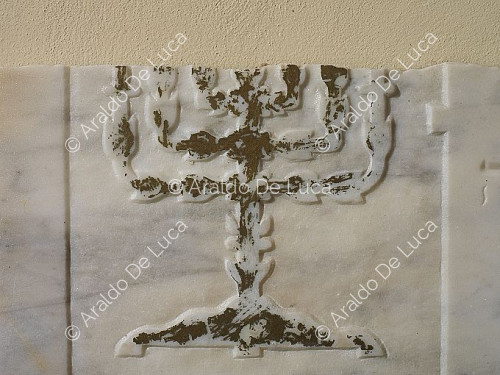Narmer's palette
Found in the temple of Horo at Ieracompoli (ancient Nekhen). It is a votive object, which takes the form of the tablets usually used for the preparation of cosmetics. The tablet is decorated in bas-relief on both sides and commemorates the unification of Egypt by Narmer. On both sides, the upper register features two female heads with horns and bovine ears, depictions of the ancient goddess Bat (assimilated to Hathor) and, in the centre, the serekh bearing the symbols of the torpedo fish and the chisel, phonetic representations of Narmer's name. Recto: in the upper register Narmer wears the Red Crown of Lower Egypt and the skirt with a bull's tail, holds the war club and scourge and is accompanied by the sandal-bearer. In front of the king is a priest and figures holding banners of the unified territories. To the right are ten decapitated bodies of enemies, with their arms tied and their heads placed between their legs. In the middle register, two servants are holding ropes tied to the intertwined necks of two mirrored serpopards (mythical felines with leopard-like bodies and snake-like necks). The circle formed by the curved necks of the two figures delimits the area where the minerals used as cosmetics were pulverised. In the lower register a bull (hypostasis of the sovereign) demolishes the walls of a fortified city and tramples a fallen enemy. Verso: the main register is occupied almost entirely by the figure of the victorious ruler, wearing the White Crown of Upper Egypt and a skirt from which hangs a bull's tail, a symbol of power. Narmer wields a war club and is about to strike a kneeling enemy whom he is holding by the hair. Next to the enemy's head are hieroglyphics that would indicate his origin, while above is the hawk Horo (above papyrus plants, a symbol of the Delta area or a marshy place), who in turn overpowers an enemy. Next to the king is depicted his sandal-bearer. In the lower register are two more dead or fleeing enemies and hieroglyphics indicating, perhaps, their place of origin.




